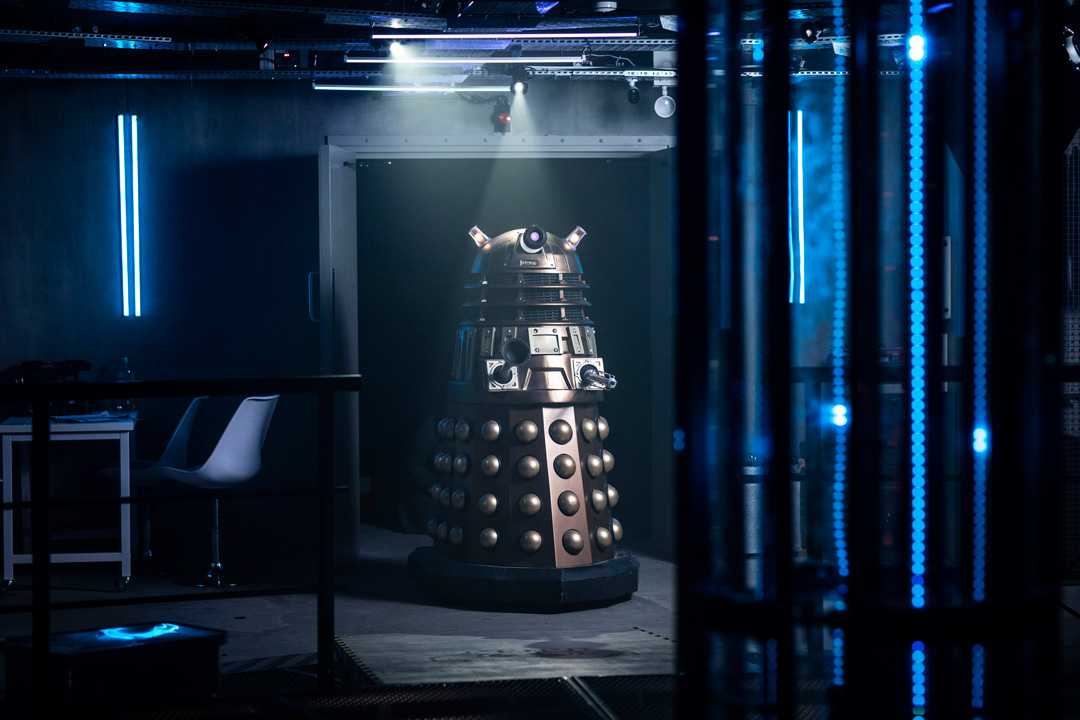Powersoft drives Doctor Who: Time Fracture
- Details

Chief creative officer for the project (and producer at Immersive Everywhere), Brian Hook, has been on board since the first meetings with the BBC nearly two years ago, and continues with the production to this day.
“My team generated the brief for the show, which was to create a Doctor Who experience unlike any other,” he said. “Eventually, that took the form of immersive theatre that placed the audience in the beating heart of the story.”
As well as finding the right creative teams to deliver the concept and sticking to the budgetary confines of the show (global pandemic-permitting), Hook also had to guide the development of the narrative concepts from an idea, through a lengthy BBC approvals process, and finally to the finished product.
“This project started in the heady days when it was still possible to go for a beer and sit late into the night talking over the projects, without the mandatory masks, scotch eggs, and seats. I'd already identified Tom Maller and Dan Dingsdale as being two of the creators I would like to lead the teams, having worked with both of them for many years.
“We presented our concepts to the BBC on the set of Jodie [Whittaker, Doctor Who actress]'s TARDIS in Cardiff and, with the help of the BBC team, wrote out the narrative. The concept of Doctor Who Time Fracture was born there, right by Jodie's console, and the hero moments, monsters, and story arc all took shape. Then the world entered a global shutdown and we were forced to push back the project by many months.”
Doctor Who Time Fracture allows visitors to become key players in the story - just the small matter of saving the universe, as it happens - and immerses them in the action using a combination of intense audio, vivid visuals, and live action actors and props. Including the backstage space, this covers an area of around 34,000sq.ft, consisting of three spaces that contain the entire audience and 14 additional worlds that hold between 1% and 20% of the show’s capacity.
With the audio being so key to the fidelity of this experience, director Tom Maller brought on sound designer Luke Swaffield of Autograph to design the sound system for the entire site, which necessitated an impressive inventory of Martin Audio, KV2, and Meyer Sound loudspeakers, and 20 Powersoft T Series (80 channels) amplifier platforms.
“The T304’s we chose are really great value for money,” said Autograph’s sound designer Luke Swaffield. “They provide so much power across four channels in just one rack unit, which was a real selling point for me as rack space was at a premium. Being able to load the different presets for the different loudspeakers and also taking advantage of gain sharing across the amps made them ideal. Having Dante on board also saved a huge amount in the budget by not having to hire lots of Dante-to-analogue converters.”
The Powersoft amplifier platforms’ power sharing allows the unit’s full power to be used across the four channels. This allowed the team to pair, for example, a power-hungry subwoofer with a lower power speaker on one of the other channels, which gives the necessary headroom.
“The combination of using this and bridging some outputs meant I could use a single model of amplifier (T304) across the entire production to power all of my passive loudspeakers,” said Swaffield. “This means we only need to carry one spare to support the entire production.”
QLab was Swaffield’s go-to for playback, while Yamaha DM64s took care of the processing. This provided him with a matrix, level, delay, and EQ for every speaker in each position.
“We use ArmoníaPlus to load the presets onto the Powersoft amps,” he explained. “Due to the mixed different manufacturers of loudspeakers I use the DME for the individual processing and timing of the loudspeakers, and ArmoníaPlus takes care of the individual voicing of the loudspeakers, thus leaving the DME free for me to do the fine tuning in the space to account for timing difference and room EQ.”
As much of the show was being created during national lockdowns in the UK, a number of former cast members were able to record themselves on home setups or at the Bond Street and Autograph studios.
Swaffield added: “We also engaged Nicolas Briggs, the modern-day voice of the Daleks and Cybermen, as we really wanted that authentic voice the audience instantly recognise and are terrified by!”
In addition to the reproduction of recorded sound, the audio system also had to accommodate effect microphones that are used throughout the show and a live singer in a later section. These inputs also feed the DME network and are processed and fed into the matrix, levelled, EQ’d, and heard in the space. These inputs are faded up and down by MIDI cues from QLab in to the DME.
“Although the project had its difficulties, we got through it by talking, and by being incredibly open and honest about the challenges ahead of us and about how we thought we might navigate them,” Hook said. “To have any kind of show at the end of this is a remarkable achievement, but to have a show that commands these production values, which was made with such kindness and generosity from the designers, suppliers crew, cast, general managers, press and marketing teams, and ticketing partners, is nothing short of a miracle.
“Andrew Bruce and his team at Autograph, Dan Large from Electric Foundry, and Dominic Yates from White Light should also be singled out for praise as they worked closely with our designers.”
















